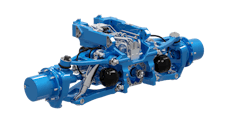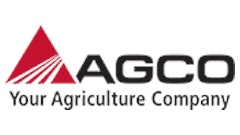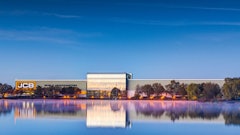
In the early years of the tractor industry the design of the perfect machine seemed to be anybody's guess. Just about any tinkerer or manufacturer had an opportunity to come up with a design that would become the standard of the industry.
By 1912, it had reportedly already happened in automobiles — cars all looked the same. According to P.J. Barnard, it was "often very confusing to distinguish one from the other." Such a standardization of design could and certainly would happen in the farm tractor industry. It was "very reasonable to believe that in but very few years there will be the same startling similarity between the different makes of gas tractors."
Barnard thought he knew who that trend setter would be. In a 153-page handbook for the "gas tractioneer", he wrote — and backed up with technical chapters and illustrations — that Gas Traction Co.'s Big Four 30 represented the "trend of the times. Its success had caused imitators to spring up like mushrooms."
The book, The "Why" of the Big Four "30" was published by Gas Traction Co.
The Big Four did, in fact, represent the trend of the times, if only for a brief but interesting era in the history of agricultural machinery. It was a time when the prairie tractor was king. Most of the tractors then were large; the Big Four was massive.
When most farmers were still using horses, the Big Four could pull a 10 bottom plow at 2 mph. The hubs of the rear wheels (they were 8 ft. 3 in. tall and 30 in. wide) were nearly chest-high for most men, and the tractor tipped the scales at 22,000 lbs.
Its four-cylinder engine — unusual for the times — produced 30 hp. at the drawbar, 60 on the belt. Drawbar work was what it was typically hired to do, and on the huge farms being planted in dense prairie sod out west, it used every bit of torque the engine could muster.
Ferd Pazandak was a pioneer in horseless farming. When Ferd was interviewed by Dr. Hiram M. Drache, professor of history at Concordia College, Moorehead, MN, in the early 1970s, he recalled that he and his brothers talked their father into buying a Geiser steam tractor and a 12-bottom plow in 1908. By 1910 they were convinced about the value of mechanical machinery, and gave $2,200 for a new gas-fueled Big Four.
Ferd had paid his dues with equestrian farming. He had helped his family plow their 1,120-acre North Dakota farm, breaking the prairie sod with a single 16-in. walking plow pulled by four horses. In a 10-hour day, Pazandak would walk 20 miles, opening less than two acres of sod.
On the Pazandak farm, the Big Four was an immediate improvement in their work load, even over the steam engine. When plowing it covered the same amount of ground as the Geiser — about 33 acres a day — even though it traveled a little slower and pulled a smaller plow. The Big Four didn't have to make frequent stops to take on more coal or water. The crew of three required for the steamer was reduced to two for the gas engine — one to drive and the other to operate the hand-lift plows.
The Big Four could trace its lineage to a one-cylinder, 8 hp. gas tractor built by D.M. Hartsough in 1899. In 1904 Hartsough built what is often considered the first successful four-cylinder tractor. A production tractor introduced the following year featured a four-cylinder engine with a 6 in. bore and 8 in. stroke. It provided 25 drawbar horsepower and 60 on the belt. By 1908 the Gas Traction Co., headquartered in Minneapolis, was building the Big Four 30.
The Gas Traction company advertised itself as the first and largest builder of four-cylinder tractors. The engine was produced in-house. Readers of Gas Traction's treatise on tractor design would learn the difference of a four- and two-stroke engine as well as vertical and horizontal engines. The Big Four's four-stroke engine was of the vertical design, while many of its competitors used horizontal one- or two-cylinder engines.
According to Gas Traction, this design relieved the cylinder walls from the dragging weight of the piston, which led to its premature wear, as well as that of the cylinder and piston rings. The vertical design also made it easier for the mechanic to work on both sides of the engine, through inspection plates below the cylinders.
Few of the farmers had the mechanical inclination that the Pazandaks possessed. This put them at a distinct advantage over their neighbors, and they often helped when local farmers also brought home a new tractor.
While books such as The "Why" of the Big Four "30" where lightly disguised advertising pieces, they actually did play an important role in explaining to a nation of novices what made the new-fangled machines hum, as well as their proper care and feeding. For example, the book said, "It is a good habit to feel in the crank case occasionally for any pieces of metal that might cause damage. It often happens that nuts and pieces of metal mysteriously appear in the oil under the connecting rods. This is usually due to the fact that they have been carelessly dropped in when the inspection plates were not in place. The crank case must be kept perfectly clean."
Fuel prices are a headache today, but fuel availability was a major hurdle for early tractor operators to overcome. The Pazandaks lived far from town, and there was no fuel delivery service. They would hitch four horses to a 500-gal. wagon tanker and make the 15-mile trip into Ellendale, ND — a trek that would take most of the day. Back at the farm two men would transfer the fuel from the wagon to an elevated bulk tank in 5 gal. buckets. Gasoline cost 10 cents a gallon in 1910.
The Pazandaks eventually used their skills to adapt the Big Four's hitch to pull a variety of implements, including seven 8 ft. discs, five binders, or seven wagons full of grain to the elevator in town. Although pulling five binders required six men — five on the binder and one on the tractor — it saved the work of 20 horses that would otherwise be doing the pulling.
The Gas Traction Co. was acquired by Emerson-Brantingham in 1912, as part of a buying spree that the Rockford, IL, implement manufacturer initiated to become a full-line company. Along with Gas Traction, it also purchased Geiser and Reeves, the latter another manufacturer of giant steam and gas tractors.
The Big Four may indeed have been a leader for a few years, but it was eventually passed by more nimble machines. Emerson-Brantingham came along and wrote those checks just as the industry was moving away from big steamers and prairie tractors toward smaller machines.
Emerson-Brantingham continued to offer the Big Four until 1920. As tractor designs evolved, Emerson-Brantingham displayed the ability to pioneer the new designs, but the fell down when it came to research and development. Emerson-Brantingham's line of tractors did not have a good reputation for dependability, and sales slipped. Even the popularity of the company's best-selling products — horsedrawn implements — declined as the tractor won more fans.
In 1928 J.I. Case Co. purchased the ailing company. It kept the huge Rockford factory and some of the lines that filled out its catalog, while others were permanently dropped.
On the Pazandak farm in North Dakota, the last of family's horses were sold in 1916, the same year they purchased a smaller tractor, a Twin City 25-35. It would pull three bottoms at 3 mph. It cost less to run and was much less cumbersome. Plus, it looked more like the other tractors on the market at the time.










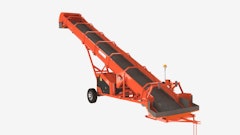



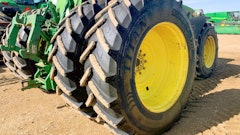

![Cross Control Ag Terminals[1]](https://img.oemoffhighway.com/files/base/acbm/ooh/image/2023/11/CrossControl___Ag_Terminals_1_.6557daeb42a70.png?auto=format%2Ccompress&fit=crop&h=135&q=70&w=240)
